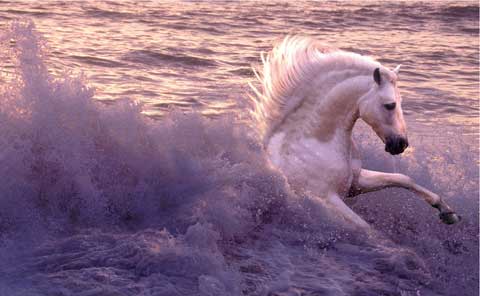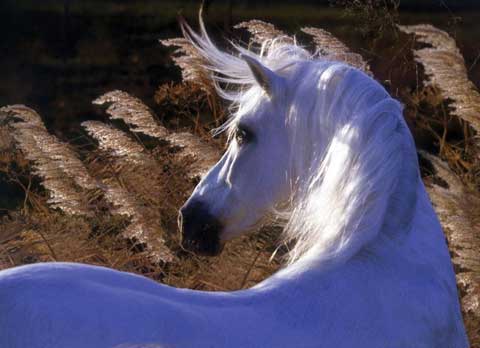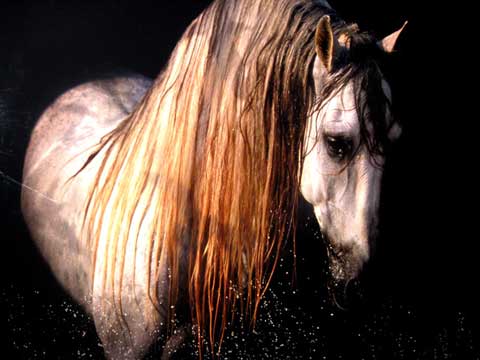Viva La Vavra!
By Staff Report April 3, 2013
Robert Vavra sees himself more as a “storyteller” than a photographer. This comes as no surprise to anyone who has had the pleasure of taking in his breathtaking images.
Now 78, he is considered by many to be the world’s premiere equine portraitist. Vavra, who hails from Southern California, in 1958 began maintaining a residence in Spain, where he was taken by the striking beauty of the Andalusian horses.
Inspired by bullfighting, he went on to create 37 art books, many of them focusing on equine subjects. The image above is of Mastel, beloved stallion of the Cardenas family, whose Rancho San Pablo is just outside Ecija, Spain. It is one of the many photos that appear in the book Cardenas – Horses and Home.
A 2011 article in the Santa Ynez Valley Journal to coincide with a Vavra exhibit at the Kentucky Horse Park documents how “the Spaniards exhibit their breeding mares in groups of three, which are referred to as ‘cobras.’ They are tethered together at the neck, with roached manes, which seems strangely unfeminine, since the Andalusian is famous for its beautiful, abundant manes and tails.”

Earlier this year Vavra’s work was on display at the San Diego Museum of Natural History, and he is internationally renowned as an expert on the horse. He was tapped by the Russian Republic to help with producing an issue of 34 horse-themed postage stamps. And he was a consultant to the filmmakers of Lawrence of Arabia and The Horse Whisperer, who leveraged his expertise on how to best capture equus’ natural beauty.
Vavra was the subject of the documentary Such Is the True Nature of Horses, with introductions by the naturalist Jane Goodall and actor and horse lover William Shatner. The film was the culmination of Vavra’s two decades living among wild horses in France, where he studied undomesticated equine behavior.
Vavra’s curiosity about the world doesn’t end at horses. In 1988 he established a camp in Ololasurai, Kenya and began what would become a six-year stay with the tribal Maasai people, which led to the publication of A Tent With a View in 1991. He has paid for the education of several Maasai children and financed the building of a school in Mexico, where, since its construction, more than 5000 boys and girls have learned to read and write.
But it is with horses that he blazed his trail. The novelist James Michener once wrote of Vavra: “Though equus has fired the imaginations of painters from Leonardo da Vinci, Velasquez, and Goya to Picasso; still, in the history of photography, no cameraman has recorded the horse with such excitement and personal style as has Robert Vavra. His images are works of art which are a joy to see because they evoke the inner nature of the horse.”
In his own words, Vavra summed up his feelings to Kentucky.com with “I was born loving horses. How they smell, how they look, everything about them.” Though his talent is singular, in that sentiment he is surely not alone.
Additional sourcing from en.wikipedia.org/wiki/Robert_Vavra.
For more information, visit RobertVavra.com.
Short URL: https://theequestriannews.com/?p=14705



